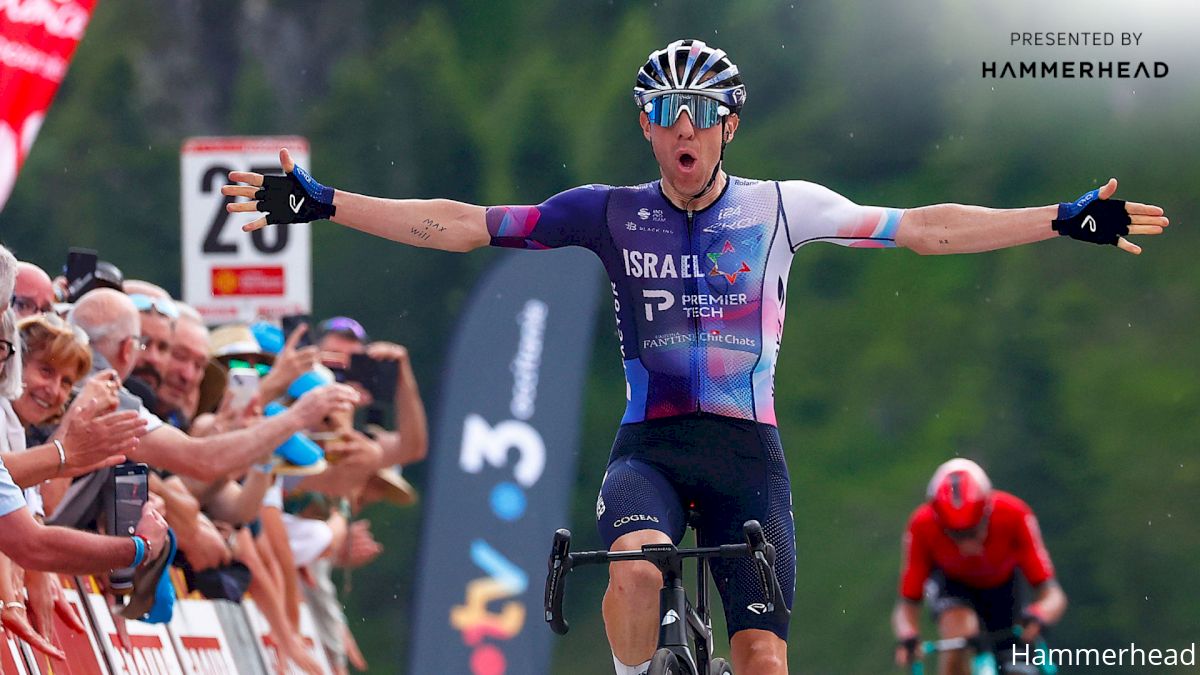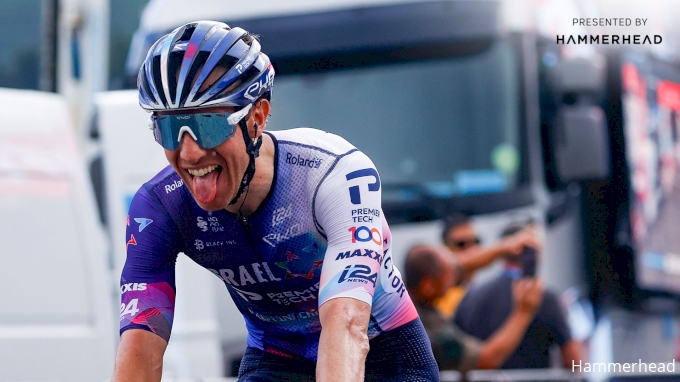The Hammerhead Karoo 2: Even Woods And Houle Would Be Lost Without It
The Hammerhead Karoo 2: Even Woods And Houle Would Be Lost Without It
Hammerhead's Karoo 2 - road testing the kit so essential to pros like Mike Woods and Hugo Houle.

This article is sponsored by Hammerhead Karoo 2 - who builds technology to inspire and empower all people to unlock their athletic potential through cycling. Visit here to get the Karoo 2 today!
Cycling writer and Pyrenean resident Peter Cossins reveals how his riding has been transformed by the Karoo 2 and hears from Israel-Premier Tech's Hugo Houle and Mike Woods about how this ground-breaking head-unit assists in their racing and training.
There's something about the way a product is boxed up that tells you how it's going to perform. Hammerhead's Karoo 2 comes in a reassuringly well-designed box. To start with, it's solid, a sideways push on the outer casing revealing the goodies within, the unit itself cleverly and firmly fixed so that your first image of it isn't one of it bouncing off along the ground. Beneath the Karoo 2, a drawer slides out to reveal the clamp, Allen key, and a box within the box that contains the charging cable and a lanyard, which is easily looped through an "eye" on the unit.
I began by working my way through a short start-up menu on the Karoo 2, which included a simple pairing process with my Strava account and a few minutes downloading the maps covering the areas in which I ride on the French side of the Pyrenees. It took me just a few moments to fit the clamp to my handlebars and then slot in the unit, the clamp accepting it with a reassuring click. In next to no time, I was off, eager to see how the Karoo 2 could aid my riding experience.
Before doing so, I should make a confession. I've rarely used any kind of a computer or head-unit since my move to France in 2016. In part, that's been a reaction to my life being so dominated by screen time. I didn't want the distraction of another screen in these extremely cherished hours of leisure. I also liked riding on "feel", responding to the road, the elements and my body's sensations, relishing the sense of liberation that the bike always instilled. Yet, there were times when I questioned my Luddism – when venturing beyond the roads that I knew well, for instance, and particularly when riding in the mountains, which is my preference eight times out of ten. What's the gradient? How far to the top? Where does that turn lead to?
So let me tell you about my first ride in the mountains with the Karoo 2. I live near the small town of Foix, where Israel-Premier Tech's Hugo Houle took an emotional and brilliantly judged breakaway victory on the 2022 Tour de France. The final climb the Canadian came down that day is the Col de Péguère, a pass that I'm sure that I've climbed more than any other. There are half a dozen ways to approach it, and I know them all well, so there was no need to preload the route. I took one of the less-traveled options, via a quiet valley that I love and at the end of which the road climbs in typical Pyrenean fashion – the gradient changing incessantly.
A kilometer or so from the foot of it, the Karoo 2 began to indicate the distance into the climb. Going on to it, it showed the distance to the top and, with a swipe upwards on the touchscreen, provided a profile of the climb that was color-coded according to gradient. I was surprised by how steep some sections were, with the unit showing double figure percentages frequently. I knew some parts were hard, but hadn't realized they were 15%!
After that tough beginning, the road reached a crest and an easier section. The Karoo 2 instantly revealed why I'd always struggled here. I'd felt that the next 5km barely rose at all, and certainly no more than 100 meters all in. The unit told me differently. My "guess-timation" was 200 meters out. The undulating road averaged 6% rather than just two, as I'd thought. Supplied with this information, I paced it better than ever before and noted later that I'd covered it a lot faster than previously too. Knowledge was power, in this case – and in the precise places I needed it!
Descending the Péguère, another key aspect of the Karoo 2 quickly became apparent – the quality of the maps. The bottom half of it is very technical, as the USA's Matteo Jorgensen found out when he slid off on a tight, off-camber corner as he chased behind Hugo Houle. It's not only useful to know how sharp the bend you're going into is, it's also very reassuring to know how hard you're going to pull on the brakes, or even if you need to at all, and this is particularly the case when riding on heavily-wooded climbs where the view ahead is reduced when trees are in leaf. Very quickly, I also began to appreciate the sensitivity of the touchscreen. It responds extremely well to a gentle caress. Having the ability to use the "rain lock" feature in the wet and navigate the unit using the buttons on the side has also proved invaluable. This ensures that the Karoo 2 still functions extremely reliably in the dirtiest of the weather.

As Hugo Houle has been so central to this story, it was especially useful to be able to get both his perspective and that of his teammate Mike Woods on the Karoo 2, which is a vital piece of kit for their Israel-Premier Tech team. "For me, the key strengths of the Karoo 2 are the maps, which are super easy to use and make it easy to find your way, and the CLIMBER feature," Houle tells me. "So each time you get near a climb, you see the details of that climb coming up, how long it is and how steep it is, section by section. Those two features are useful for me in training as well as when racing. For example, in a race you sometimes see that the gradient's easing a little bit maybe a kilometer from where you are, so you push to stay in the bunch, then you can get a bit of rest and can hang on longer. So it helps you to pace the effort in certain moments."
I've caught him in the middle of an altitude training camp for the team in Andorra, just 70 kilometers or so from the sight of his Tour stage win, and he is of course using the head-unit during this important preparatory block for this year's Tour. "When you're doing this kind of training, the computer's really useful because you can see the pacing on the climbs, the power, the heart rate, all those fundamental features. So it's an important piece of equipment when we train, to collect the data and know what we're doing," Houle explains.
His compatriot Woods is a Karoo 2 fan as well. "I think my favorite part about the Karoo 2 is that there's a sense of permanence. Unlike other bike computers on the market, you get the sense that the Karoo 2 is going to last, and you're not going to need to change it every year. You're just updating the software, which is simple to do. I've also been really pleased with the durability of it," he says. As I quickly realized, these updates are as straightforward as Woods indicates. Once the unit reconnects with WiFi, it updates automatically, its functionality improving at the same time.
Asked about how the Karoo 2 benefits him when racing, Woods, like Houle, highlights the high quality of the maps. "The mapping and the CLIMBER function are the most useful to me," he affirms. "Both have really helped me while racing in Europe. Often, we're taking on new roads and new climbs, and even though we sometimes recon these climbs, we often don't, and knowing the breakdown of a climb is a game-changer. After getting over the climb, if we have a crazy technical descent, I use the mapping function quite a bit. Because, visually, the Karoo 2 is so good, we're able to predict the corners and descend safer."